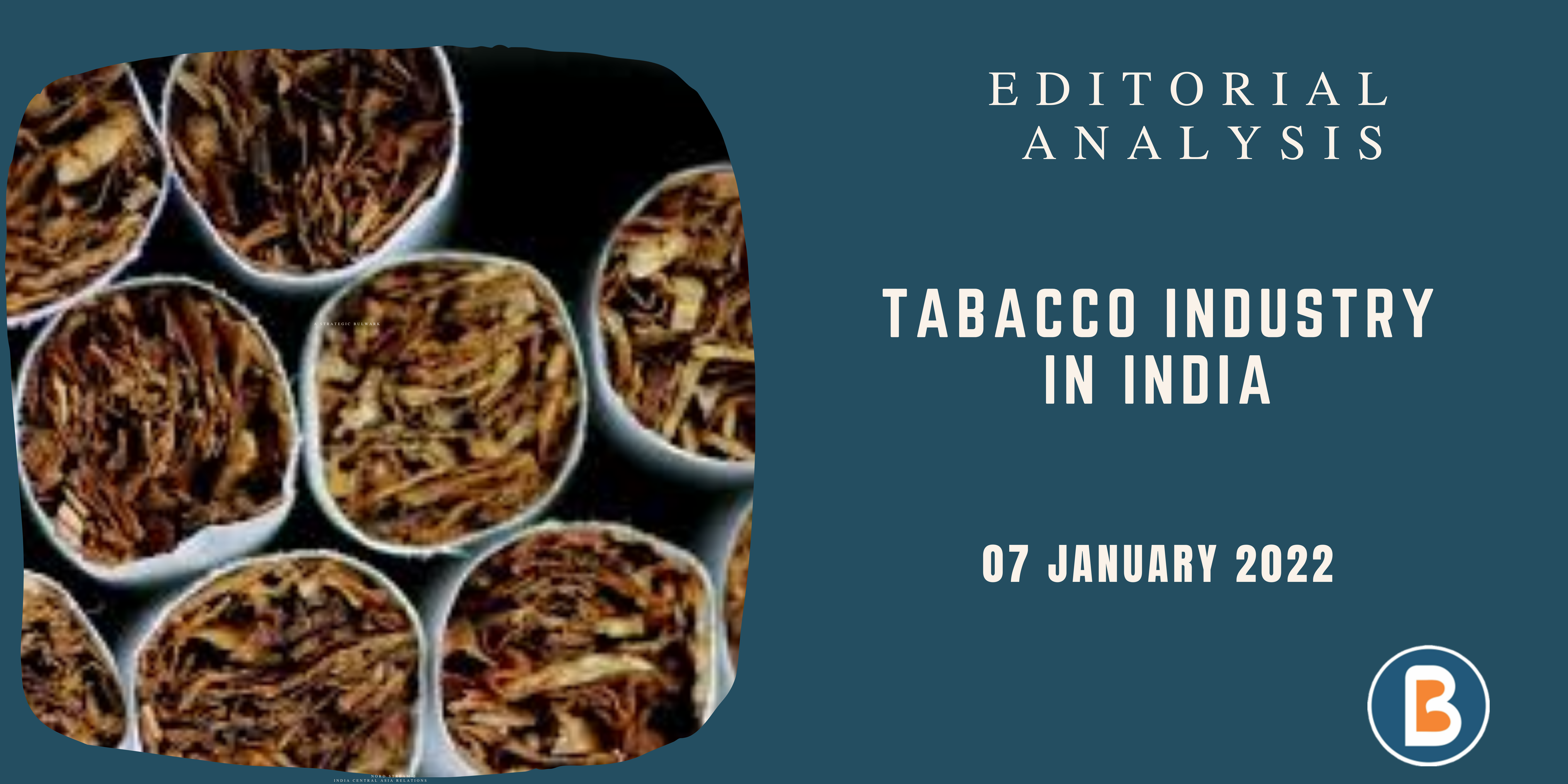- Posted on
- Editorials
Statistics related to Tobacco consumption in India:
- In India, tobacco smoking is acknowledged to be a substantial risk factor for a variety of noncommunicable diseases.
- In India, there is a lot of tobacco abuse.
- In India, 28.6 percent of individuals over the age of 15 and 8.5 percent of students aged 13 to 15 use tobacco in some way.
- As a result, the country is the world’s second-largest tobacco consumer.
- There has been no action taken against tobacco.
- Tobacco consumption costs India more than Rs. 1,77,340 crores every year.
- Since the implementation of GST four years ago, there has been no significant increase in tobacco product taxes to discourage tobacco use.
- The Union Budget only had the impact of raising the average price of cigarettes by around 5% in 2020-21.
- Despite this, India’s tobacco excise duty remains extremely cheap.
Associated Concerns:
- A concerning pattern has emerged.
There will be no tax increase: The absence of a tax hike implies that the tobacco business will make more money and the government will lose more cash.
Revenue lost: This money may have been put to better use during the COVID-19 pandemic.
- GST losses: In each of the last two fiscal years, GST revenues from tobacco goods have decreased by 3% in real terms.
Tobacco GST slab governance: Tobacco is now a heavily taxed commodity. It is still subject to the GST rate of 28%. (other than for tobacco leaves which is taxed at 5 percent ).
- Tobacco and its different forms are likewise subject to a hefty cess load, as the product is regarded as a sin good.
- To discourage cigarette consumption, the government places photographs of cancer patients on the packaging of cigarettes.
- Before the GST, excise taxes on a variety of tobacco goods were routinely raised in the yearly Union Budgets.
- Similarly, a number of state governments used to raise the value-added tax (VAT) on tobacco items on a regular basis.
- Most State governments had gone from a low VAT regime on tobacco items to a high VAT regime in the five years leading up to the introduction of the GST.
Consequences of such policies:
Consumption has increased: Because of the lack of tax hikes in the post-GST years, some current smokers may be smoking more today, and some non-smokers may be starting to smoke.
Reversal of the declining trend in prevalence: This could lead to a reversal of the declining trend in prevalence.
Affordability: According to recent literature from India, tobacco products are more affordable post-GST.
Missing the national target: This could jeopardize India’s promise to achieve a 30 percent reduction in tobacco use prevalence by 2025, as set out in the 2017 National Health Policy.
A path forward:
- Several countries around the world have high excise taxes, which are combined with the GST or sales tax, and they are always changing.
- We must follow the WHO’s recommendation of a uniform tax burden of at least 75% on all tobacco products.
- The Union government should prioritize public health and drastically increase excise taxes on all tobacco goods — either the basic excise duty or the NCCD.
- To lower tobacco usage prevalence and aid India’s progress toward sustainable development goals, taxation should result in a considerable drop in the affordability of tobacco products.
Source: THE HINDU.



